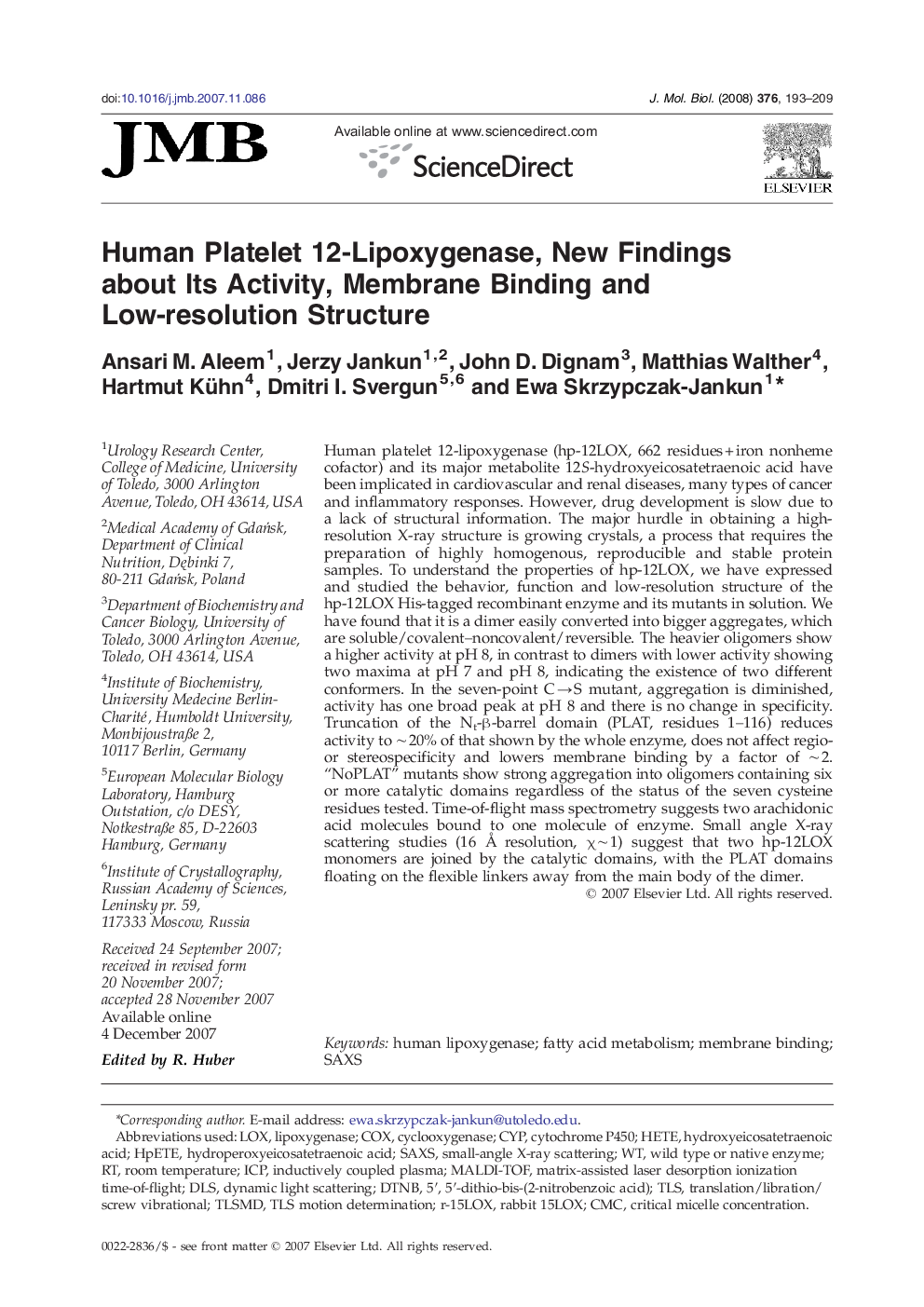| Article ID | Journal | Published Year | Pages | File Type |
|---|---|---|---|---|
| 2187640 | Journal of Molecular Biology | 2008 | 17 Pages |
Human platelet 12-lipoxygenase (hp-12LOX, 662 residues + iron nonheme cofactor) and its major metabolite 12S-hydroxyeicosatetraenoic acid have been implicated in cardiovascular and renal diseases, many types of cancer and inflammatory responses. However, drug development is slow due to a lack of structural information. The major hurdle in obtaining a high-resolution X-ray structure is growing crystals, a process that requires the preparation of highly homogenous, reproducible and stable protein samples. To understand the properties of hp-12LOX, we have expressed and studied the behavior, function and low-resolution structure of the hp-12LOX His-tagged recombinant enzyme and its mutants in solution. We have found that it is a dimer easily converted into bigger aggregates, which are soluble/covalent–noncovalent/reversible. The heavier oligomers show a higher activity at pH 8, in contrast to dimers with lower activity showing two maxima at pH 7 and pH 8, indicating the existence of two different conformers. In the seven-point C → S mutant, aggregation is diminished, activity has one broad peak at pH 8 and there is no change in specificity. Truncation of the Nt-β-barrel domain (PLAT, residues 1–116) reduces activity to ∼ 20% of that shown by the whole enzyme, does not affect regio- or stereospecificity and lowers membrane binding by a factor of ∼ 2. “NoPLAT” mutants show strong aggregation into oligomers containing six or more catalytic domains regardless of the status of the seven cysteine residues tested. Time-of-flight mass spectrometry suggests two arachidonic acid molecules bound to one molecule of enzyme. Small angle X-ray scattering studies (16 Å resolution, χ∼ 1) suggest that two hp-12LOX monomers are joined by the catalytic domains, with the PLAT domains floating on the flexible linkers away from the main body of the dimer.
